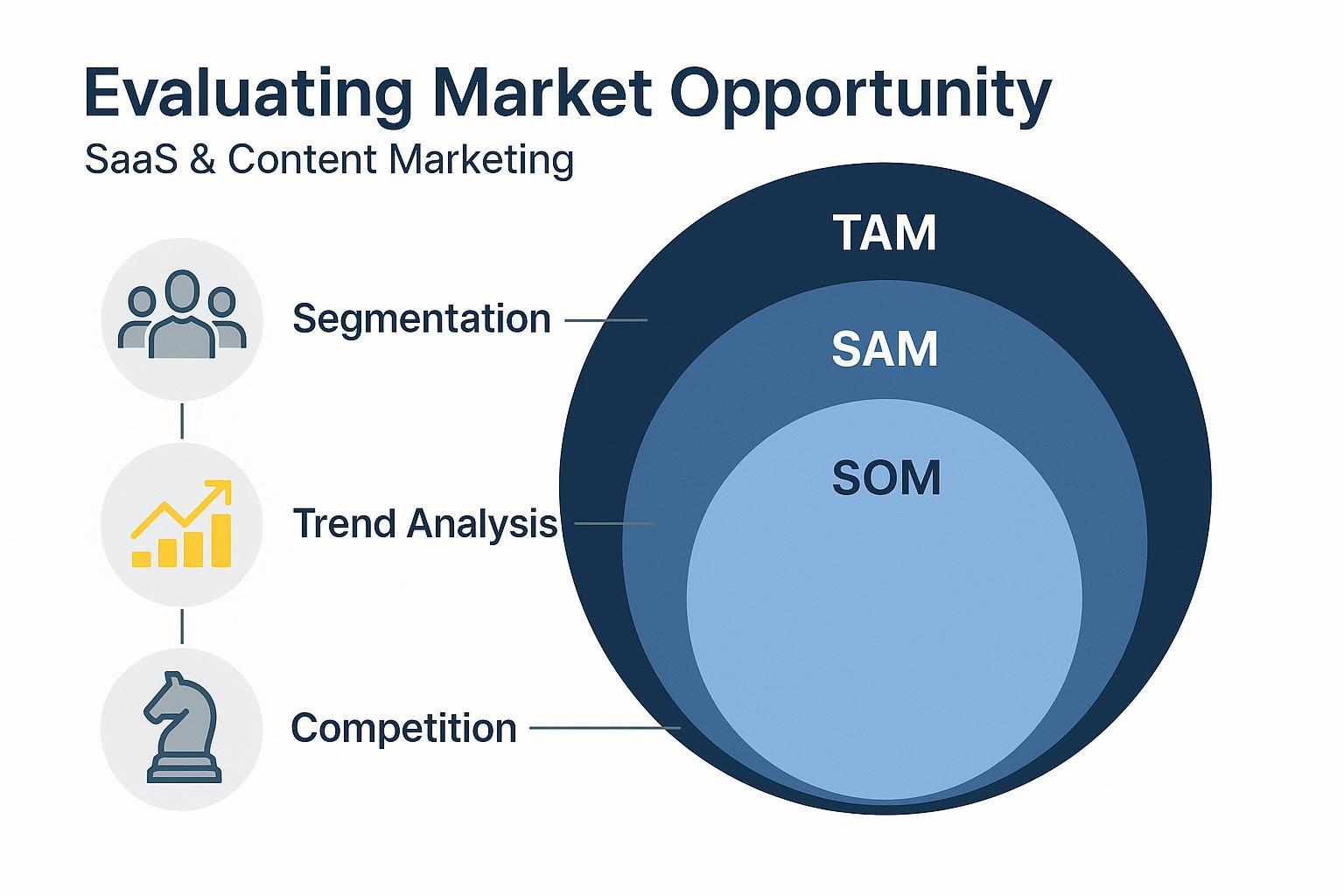Understanding Market Opportunity: Definition, Key Factors, and Implications for SaaS and Content Marketing

One-Sentence Definition
Market opportunity is the total potential for business growth and revenue in a defined segment, quantified by assessing the size, accessibility, and fit of target markets—crucial for strategic planning in SaaS and content marketing organizations (ProductLed).
Detailed Explanation: Why Market Opportunity Matters
In SaaS and content marketing, understanding market opportunity is more than estimating potential revenue—it’s about pinpointing where real growth can be achieved. This process evaluates who your reachable customers are, how big the value pool is (measured as Total Addressable Market, or TAM), what subset can realistically access your solution (Serviceable Available Market, or SAM), and what you can practically win given resources and competition (Serviceable Obtainable Market, or SOM) (The Clueless Company).
Organizations use this layered approach to avoid overestimating possible gains, focus on real feasible segments, and guide investment, product launches, or market expansion.
Key Components of Assessing Market Opportunity
- TAM (Total Addressable Market): The upper boundary—total possible revenue if every target customer bought your solution.
- SAM (Serviceable Available Market): The segment of TAM you could realistically serve based on product fit, region, or use case.
- SOM (Serviceable Obtainable Market): The most actionable slice—those you can expect to reach and convert soon, considering current capabilities and competition.
| Market Layer | Definition | Practical Example |
|---|---|---|
| TAM | All potential sales, no limits | Every company needing marketing software |
| SAM | Segment you can serve (e.g., by geography/industry) | US-based B2B firms needing automated blogs |
| SOM | Realistically winnable share now | Mid-sized agencies with current outreach |
Stepwise Framework for Evaluation
- Segment the Market: Define ideal customer profile (ICP) and industry/geographic focus.
- Size Each Layer: Use industry data (top-down) and actual customer lists/contracts (bottom-up).
- Analyze Competition: Map existing players and consider their market share.
- Assess Trends & Gaps: Investigate technological shifts and unmet needs.
- Resource Alignment: Match analysis to your own sales, marketing, and product bandwidth.
- Iterate Regularly: Update models and datasets as markets and tech evolve.
Real-World Application Scenario
Example: An AI-driven SaaS platform for content creators sizes its TAM as all companies publishing online content. After filtering for English-speaking, mid-sized businesses with growing digital budgets (SAM), it identifies its current SOM as agencies willing to adopt AI with minimal setup. By reassessing regularly and tracking tech adoption trends, the company adapts its projections to stay relevant—avoiding the pitfall of outdated opportunity analyses.
Related and Confusing Concepts—At a Glance
| Concept | What It Is |
|---|---|
| Market Opportunity | Full scope of potential if your company captured its target segment (TAM/SAM/SOM layers) |
| Market Size | SAM—the realistic segment you could serve |
| Market Share | Percentage of the SOM actually captured to date |
| Market Analysis | The broader research discipline for collecting, analyzing, and interpreting all relevant market data |
| Product-Market Fit | The degree your product meets a segment's real needs |
For a deeper dive, see Planergy's Opportunity Analysis guide.
Implications for SaaS and Content Marketing
- Informs Go-to-Market Strategy: Accurate opportunity sizing calibrates marketing spend, sales targeting, and resource allocation.
- Reduces Risk: Avoids costly launches into oversaturated or ill-fitting markets.
- Adapts to Market Change: Regular review supports agility amid rapid SaaS/content evolution—AI, regulations, and shifting buyer behavior.
- Enables Stakeholder Buy-In: Clear numbers and segments enhance internal and investor confidence.
In summary: Mastering market opportunity analysis is a must-have skill for SaaS and content marketers who want to match ambition with real-world impact. Always update your analysis and connect it directly to your business strategy for sustainable growth.

